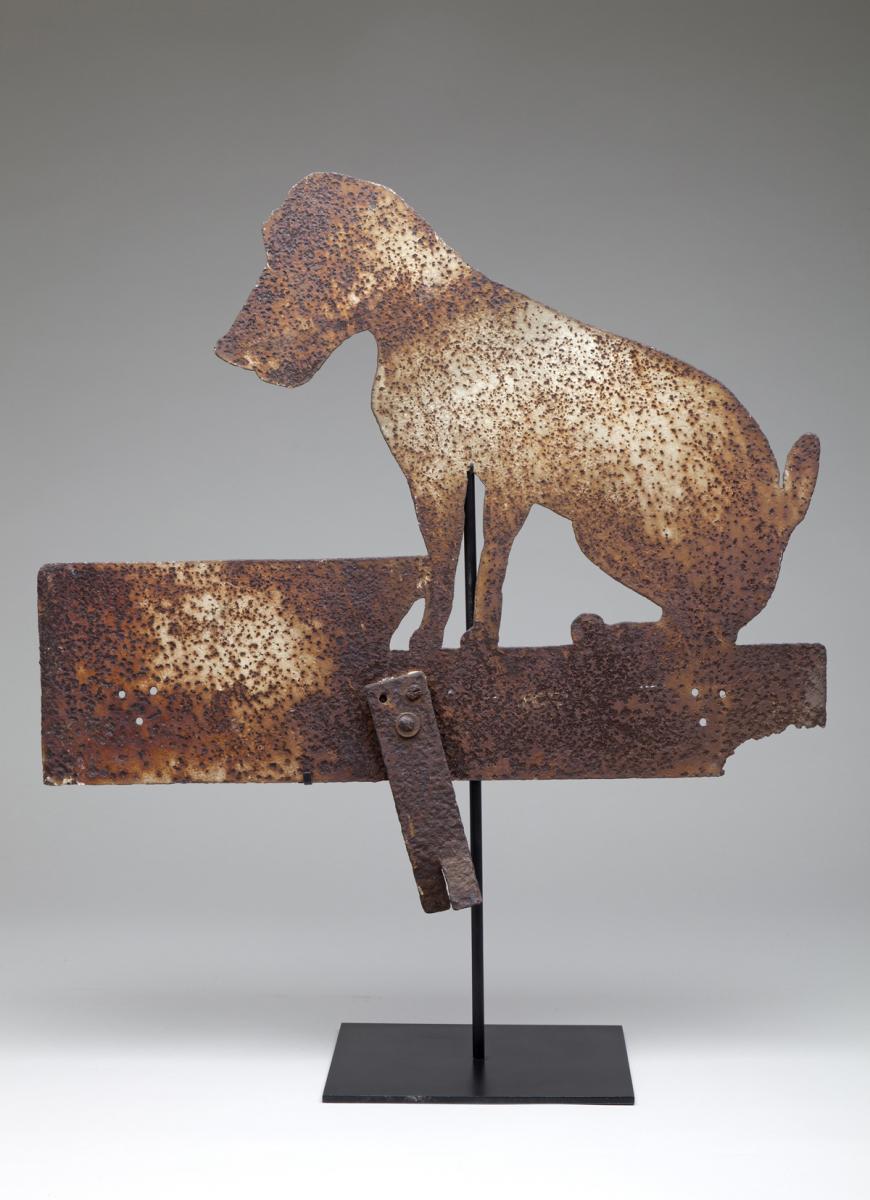This wonderful Cornish workshop and museum is dedicated to the legacy of studio pottery trailblazer Bernard Leach
British Folk Art: far from formal
British Folk Art: far from formal
29 Jan 2019
Compton Verney is home to the largest collection of British Folk Art in the UK. Its display has recently been reimagined by the artist Mark Hearld. Collections manager Annelise Hone spotlights six special pieces.
In the frame
Model of a Potter's Workshop
This small automated model of a potter’s workshop was made around 1900 and is only 32cm high. It shows a potter (left) and his assistant (right) hard at work. The figure on the right turns the flywheel, mopping his brow intermittently. The figure on the left moves his arm up and down to shape the revolving pot. Designed to attract trade, this model might have been placed in the window of a potter’s workshop.
Scottish scene
Accident on the Road to Inverness © Compton Verney, photo by Jamie Woodley
From the writhing horses in the foreground to the tranquil ships in the Moray Firth behind, Accident on the Road to Inverness is a work of contrasts. Painted in about 1825 and likely to show an actual incident, it portrays the stretch of road that runs from Inverness on the left, towards Nairn on the right. Castle Stuart is on the far left. Precise strokes capture the chaos of the collision, while the vast landscape is conveyed with broad sweeps. There is a fabulous contrast between tranquillity in the landscape and the dramatic moment chosen by the artist.
Weather watch
 Seated Dog Weathervane, artist unknown © Compton Verney, photo by Jamie Woodley
Seated Dog Weathervane, artist unknown © Compton Verney, photo by Jamie Woodley
Seen in silhouette, this iron weathervane of a seated terrier was created in about 1880. As with so many pieces, its maker is unknown, but was perhaps a local blacksmith. This kind of object would have been invaluable in communities where so many relied on farming or sailing for their livelihood. Unusually, the dog is facing backwards: its tail is at the point (the front) of the weathervane, and its head is at the sail (the part where the wind catches).
Farmer’s prize
A Pair of Pigs, English School © Compton Verney, photo by Jamie Woodley
Known as the father of animal husbandry, the 18th-century agriculturalist Robert Bakewell revolutionised farming with his livestock breeding methods. In response to his practices of selective breeding, farmers began to commission artists to paint their own overly fattened animals. Painted around 1850, this picture, A Pair of Pigs, would have been used to display the quality and ancestry of a particular farmer’s stock.
Harms for arms
The Kings Harms, Manchester © Compton Verney, photo by Jamie Woodley
Filled with charm and colour, this vibrant scene evokes the bustle of King Street, Manchester. Painted in 1800, the work taps into the rising popularity of coach travel, due to improvements in carriage technology. You can almost hear the sound of the horses’ hooves as they start their journey, departing from the Kings Arms (spelt ‘harms’). From the windows, maids marvel at the scene far below, and an affluent lady is carried in a sedan chair.
Public piece
The Swan public house sign, artist unknown © Compton Verney, photo by Hugh Kelly
This wooden sign dates from between 1700 and 1750 and would have been made for a pub called The Swan. Like most pieces of Folk Art, it would have been made by someone trained as a signwriter, house painter or in another trade. As with most inn signs it would have been outside in the elements, so will have been repainted many times during its history.
See
The British Folk Art Collection, open Tuesday to Sunday, 11am-5pm, Compton Verney, Warwickshire. To find out more, visit comptonverney.org.uk
About the Author
The Arts Society
JOIN OUR MAILING LIST
Become an instant expert!
Find out more about the arts by becoming a Supporter of The Arts Society.
For just £20 a year you will receive invitations to exclusive member events and courses, special offers and concessions, our regular newsletter and our beautiful arts magazine, full of news, views, events and artist profiles.
FIND YOUR NEAREST SOCIETY
MORE FEATURES
Ever wanted to write a crime novel? As Britain’s annual crime writing festival opens, we uncover some top leads
It’s just 10 days until the Summer Olympic Games open in Paris. To mark the moment, Simon Inglis reveals how art and design play a key part in this, the world’s most spectacular multi-sport competition


